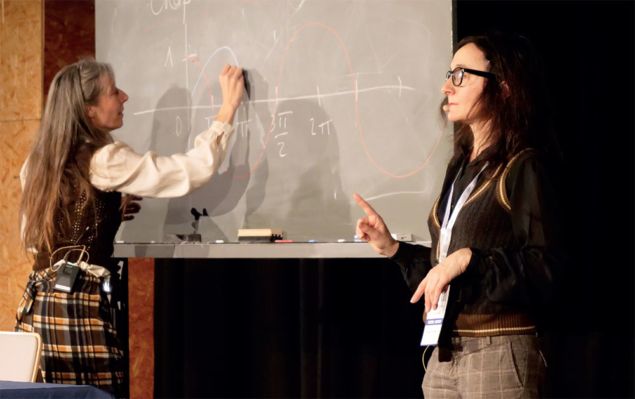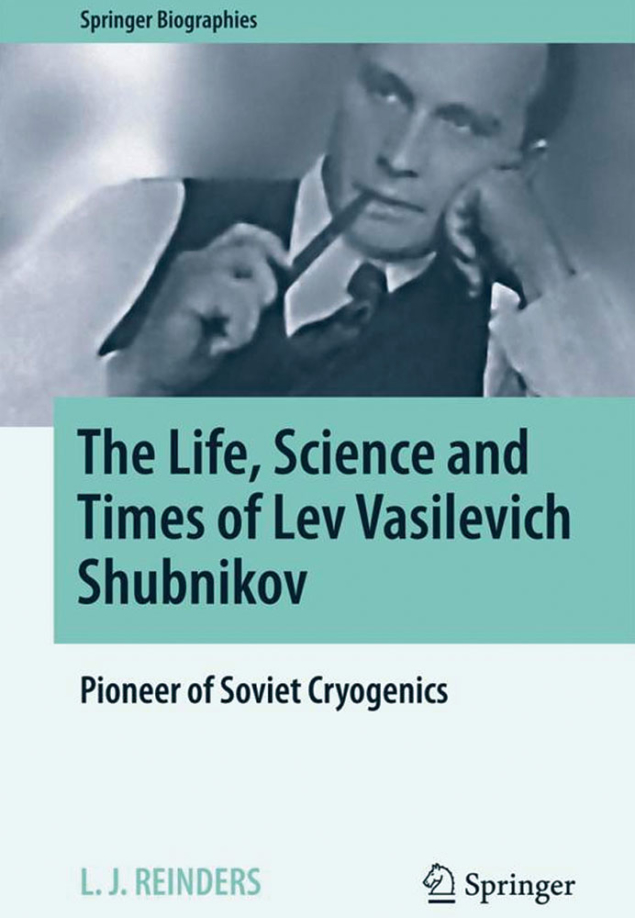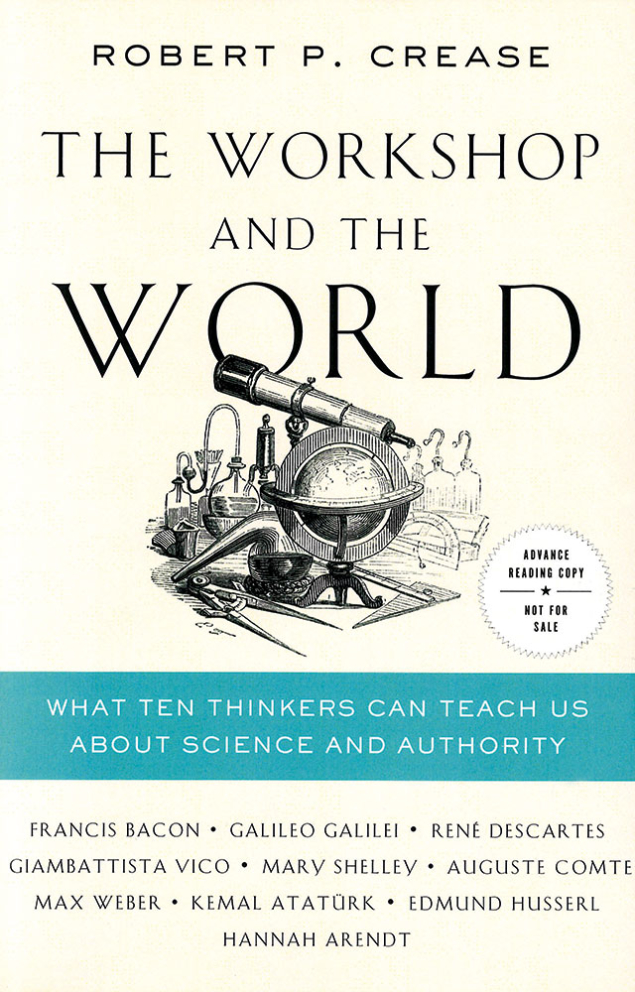The Soviet Atomic Project: How the Soviet Union Obtained the Atomic Bomb • Advances in Particle Therapy: A multidisciplinary approach • Mad maths • The Life, Science and Times of Lev Vasilevich Shubnikov, Pioneer of Soviet Cryogenics • The Workshop and the World, what ten thinkers can teach us about science and authority
The Soviet Atomic Project: How the Soviet Union Obtained the Atomic Bomb
by Lee G Pondrom
World Scientific
“Leave them in peace. We can always shoot them later.” Thus spoke Soviet Union leader Josef Stalin, in response to a query by Soviet security and secret police chief Lavrentiy Beria about whether research in quantum mechanics and relativity (considered by Marxists to be incompatible with the principles of dialectical materialism) should be allowed. With these words, a generation of Soviet physical scientists were spared a disaster like the one perpetrated on Soviet agriculture by Trofim Lysenko’s politically correct, pseudoscientific theories of genetics. The reason behind this judgement was the successful development of nuclear weapons by Soviet physical scientists and the recognition by Stalin and Beria of the essential role that these “bourgeois” sciences played in that development.

Political intrigue, the arms race, early developments of nuclear science, espionage and more are all present in this gripping book, which provides a comprehensive account of the intensive programme the Soviets embarked on in 1945, immediately after Hiroshima, to catch up with the US in the area of nuclear weapons. A great deal is known about the Manhattan project, from the key scientists involved, to the many Los Alamos incidents – such as Fermi’s determination of the Alamogordo test-blast energy using scraps of paper and Feynman’s ability to crack his Los Alamos colleagues’ safes – that are intrinsic parts of the US nuclear/particle-physics community’s culture. On the contrary, little is known, at least in the West, about the huge effort made by the war-ravaged Soviet Union in less than five years to reach strategic parity with the US.
Pondrom, a prominent experimental particle physicist with a life-long interest in Russia and its language, provides an intriguing narrative. It is based on a thorough study of available literature plus a number of original documents – many of which he translated himself – that gives a fascinating insight into this history-changing enterprise and into the personalities of the exceptional people behind it.

The success of the Soviet programme was primarily due to Igor Kurchatov, a gifted experimental physicist and outstanding scientific administrator, who was equally at ease with laboratory workers, prominent theoretical physicists and the highest leaders in government, including Beria and Stalin himself. Saddled with developing several huge and remotely located laboratories from scratch, he remained closely involved in many important nitty-gritty scientific and engineering problems. For example, Kurchatov participated hands-on and full-time in the difficult commissioning of Reactor A, the first full-scale reactor for plutonium-239 production at the sprawling Combine #817 laboratory, receiving, along the way, a radiation dose that was 100 times the safe limit that he had established for laboratory staff members.
Beria was the overall project controller and ultimate decision-maker. Although best known for his role as Stalin’s ruthless enforcer – Pondrom describes him as “supreme evil,” Sakharov as a “dangerous man” – he was also an extraordinary organiser and a practical manager. When asked in the 1970s, long after Beria’s demise, how best to develop a Soviet equivalent of Silicon Valley, Soviet Academy of Sciences president A P Alexandrov answered “Dig up Beria.” Beria promised project scientists improved living conditions and freedom from persecution if they performed well (and that they would “be sent far away” if they didn’t). His daily access to Stalin was critical for keeping the project on track. Most of the project’s manual construction work used slave labour from Beria’s gulag.
Both the US and Soviet projects were monumental in scope; Pondrom estimates the Manhattan project’s scale to be about 2% of the US economy. The Soviet’s project scale was similar, but in an economy one-tenth the size. The Soviets had some advantage from the information gathered by espionage (and the simple fact that they knew the Manhattan project succeeded). Also, German scientists interned in Russia for the project played important support roles, especially in the large-scale purification of reactor-grade natural uranium. In addition, there was a nearly unlimited supply of unpaid labourers, as well as German prisoners of war with scientific and engineering backgrounds whose participation in the project was rewarded by better living conditions.
The book is crisply written and well worth the read. The text includes a number of translated segments of official documents plus extracts from memoirs of some of the people involved. So, although Pondrom sprinkles his opinions throughout, there is sufficient material to permit readers to make their own judgements. He doesn’t shirk from explaining some of the complex technical issues, which he (usually) addresses clearly and concisely. The appendices expand on technical issues, some on an elementary level for non-physicists, and others, including isotope extraction techniques, nuclear reaction issues and encryption, in more detail, much of which was new to me.
On the other hand, the confusing assortment of laboratories, their locations, leaders and primary tasks begged for some kind of summary or graphics. The simple chart describing the Soviet’s complex espionage network in the US was useful for keeping track of the roles of the persons involved; a similar chart for the laboratories and their roles would have been equally valuable. The book would also have benefited from a final edit that might have eliminated some of the repetition and caught some obvious errors. But these are minor faults in an engaging, informative book.
Stephen L Olsen, University of Chinese Academy of Sciences.
Advances in Particle Therapy: A multidisciplinary approach
by Manjit Dosanjh and Jacques Bernier (eds)
CRC Press, Taylor and Francis Group
A new volume in the CRC Press series on Medical Physics and Biomedical Engineering, this interesting book on particle therapy is structured in 19 chapters, each written by one or more co-authors out of a team of 49 experts (including the two editors). Most are medical physicists, radiation oncologists and radiobiologists who are well renowned in the field.

The opening chapter provides a brief and useful summary of the evolution of modern radiation oncology, starting from the discovery of X rays up to the latest generation of proton and carbon-ion accelerators. The second and third chapters are devoted to the radiobiological aspects of particle therapy. After an introductory part where the concepts of relative biological effectiveness (RBE) and oxygen-enhancement ratio are defined, this section of the book goes on to review the most recent knowledge gained in the field, from DNA structure to the production of radiation-induced damage, to secondary cancer risk. The conclusion is that, as biological effects and clinical response are functions of a broad range of parameters, we are still far from a complete understanding of all radiobiological aspects underlying particle therapy, as well as from a universally accepted RBE model providing the optimum RBE value to be used for any given treatment.
Chapter 4 and, later, chapter 18 are dedicated to particle-therapy technologies. The first provides a simple explanation of the operating principles of particle accelerators and then goes into the details of beam delivery systems and dose conformation devices. Chapter 18 recalls the historical development of particle therapy in Europe, first with the European Light Ion Medical Accelerator (EULIMA) study and Proton-Ion Medical Machine Study (PIMMS), and then with the design and construction of the HIT, CNAO and MedAustron clinical facilities (CERN Courier January/February 2018 p25). It then provides an outlook on ongoing and expected future technological developments in accelerator design.
Chapter 5 discusses the general requirements for setting up a particle therapy centre, while the following chapter provides an extensive review of imaging techniques for both patient positioning and treatment verification. These are made necessary by the rapid spread of active beam delivery technologies (scanning) and robotic patient positioning systems, which have strongly improved dose delivery. Chapter 7 reviews therapeutic indications for particle therapy and explains the necessity to integrate it with all other treatment modalities so that oncologists can decide on the best combination of therapies for each individual patient. Chapter 8 reports on the history of the European Network of Light Ion Hadron Therapy (ENLIGHT) and its role in boosting collaborative efforts in particle therapy and in training specialists.
The central part of the book (chapters 9 to 15) reviews worldwide clinical results and indications for particle therapy from different angles, pointing out the inherent difficulties in comparing conventional radiation therapy and particle therapy. It analyses the two perspectives under which the dosimetric properties of particles can translate into clinical benefit: decreasing the dose to normal tissue to reduce complications, or scaling the dose to the tumour to improve tumour control without increasing the dose to normal tissue.
Chapter 16 discusses the economic aspects of particle therapy, such as cost-effectiveness and budget impact, while the following chapter describes the benefits of a “rapid learning health care” system. The last chapter discusses global challenges in radiation therapy, such as how to bring medical electron linac technology to low- and middle-income countries (CERN Courier March 2017 p31). I found this last chapter slightly confusing as I did not understand what is meant by “radiation rotary” and I could not fully grasp the mixing-up of different topics, such as particle therapy and nuclear detonation-terrorism. This part also seemed too US-focussed when discussing the various initiatives, and I was not in agreement with some of the statements (e.g. that particle therapy has undergone a cost reduction by an order of magnitude or more in the past 10 years).
Overall, this book provides a useful compendium of state-of-the-art particle therapy and each chapter is supported by an extensive bibliography, meeting the expectations of both experts and readers interested in gaining an overview of the field. The essay is well structured, and enables readers to go through only selected chapters and in the order that they prefer. Some knowledge of radiobiology, clinical oncology and accelerator technology is assumed. It is disappointing that clinical dosimetry and treatment planning are not addressed other than in a brief mention in chapter 5, but perhaps this is something to consider for a second edition.
Marco Silari, CERN.
Mad maths
Theatre, CERN Globe
24 January 2019
Do you remember your maths high-school teachers? Were they strict? Funny? Extraordinary? Boring? The theatre comedy “Mad maths” presents the two most unusual teachers you can imagine. Armed with chalk and measuring tapes, Mademoiselle X and Mademoiselle Y aim to heal all those with maths phobia, and teach the audience more about their favourite subject.

On 24 January CERN’s fully booked Globe of Science and Innovation turned into a bizarre classroom. Marching along well-defined 90° angles, and meticulously measuring everything around them, the comedians Sophie Leclercq and Garance Legrou play with numbers and fight at the blackboard to make maths entertaining. The dialogues are juiced up with rap and music, spiced by friendly maths jargon, and seasoned with a hint of craziness. Bumping with trigonometry, philosophising about the number zero, and inventing new counting systems with dubious benefits, the rhythm grows exponentially. For example, did you know that some people’s mood goes up and down like a sine function? That you can make music with fractions? And that some bureaucratic steps are noncommutative?
This comedy show originated from an idea by Olivier Faliez and Kevin Lapin from the French theatre company Sous un autre angle. First studying maths at the university, then attending theatre school, Faliez combined his two passions in 2003 to create an entertaining programme based on maths-driven jokes and turns of event.
Perfect for families with children, this French play has already been performed more than 500 times, especially at science festivals and schools. The topics are customised depending on the level of the students. Future showings are scheduled in Castanet (15 March), Les Mureaux (22 March) and in several schools in France and other countries. Teachers and event organisers who are interested in the show are advised to contact Sophie Leclercq.
At times foolish, at times witty, it is worth watching if and only if you want to unwind and rediscover maths from a different perspective.
Letizia Diamante, CERN.
The Life, Science and Times of Lev Vasilevich Shubnikov, Pioneer of Soviet Cryogenics
by L J Reinders
Springer
This book is a biography of Russian physicist Lev Vasilevich Shubnikov, whose work is scarcely known despite its importance and broad reach. It is also a portrayal of the political and ideological environment existing in the Soviet Union in the late 1930s under Stalin’s repressive regime.

While at Leiden University in the Netherlands, which at the time had the most advanced laboratory for low-temperature physics in the world, Shubnikov co-discovered the Shubnikov–De Haas effect: the first observation of quantum-mechanical oscillations of a physical quantity (in this case the resistance of bismuth) at low temperatures and high magnetic fields.
In 1930 Shubnikov went to Kharkov (as it is called in Russian) in the Ukraine, where he built up the first low-temperature laboratory in the Soviet Union. There he led an impressive scientific programme and, together with his team, he discovered what is now known as type-II superconductivity (or the Shubnikov phase) and nuclear paramagnetism. In addition, independently of and almost simultaneously with Meissner and Ochsenfield, they observed the complete diamagnetism of superconductors (today known as the Meissner effect).
In 1937, aged just 36, Shubnikov was arrested, processed by Stalin’s regime and executed “for no other reason than that he had shown evidence of independent thought”, as the author states.
Based on thorough document research and a collection of memories from people who knew Shubnikov, this book will appeal not only to those curious about this physicist, but also to readers interested in the history of Soviet science, especially the development of Soviet physics in the 1930s and the impact that Stalin’s regime had on it.
Virginia Greco, CERN.
The Workshop and the World, what ten thinkers can teach us about science and authority
by Robert P Crease
W. W. Norton & Company
In this book, science historian Robert Crease discusses the concept of scientific authority, how it has changed along the centuries, and how society and politicians interact with scientists and the scientific process – which he refers to as the “workshop”.

Crease begins with an introduction about current anti-science rhetoric and science denial – the most evident manifestation of which is probably the claim that “global warming is a hoax perpetrated by scientists with hidden agendas”.
Four sections follow. In part one, the author introduces the first articulation of scientific authority through the stories of three renowned scientists and philosophers: Francis Bacon, Galileo Galilei and René Descartes. Here, some vulnerabilities of the authority of the scientific workshop emerge, but they are discussed further in the second section of the book through the stories of thinkers like Giambattista Vico, Mary Shelley and Auguste Comte.
Part three attempts to understand the deeply complicated relationship between the workshop and the world, described through the stories of Max Weber, Kemal Atatürk and his precursors, and Edmund Husserl. The final section is all about reinventing authority and is discussed through the work of Hannah Arendt, a thinker who barely escaped the Holocaust and who provided a deep analysis of authority as well as provding clues as to how to restore it.
With this brilliantly written essay, Crease aims to explore what practising science for the common good means and to understand what makes a social and political atmosphere in which science denial can flourish. Finally, Crease tries to suggest what can be done to ensure that science and scientists regain the trust of the people.
Virginia Greco, CERN.








